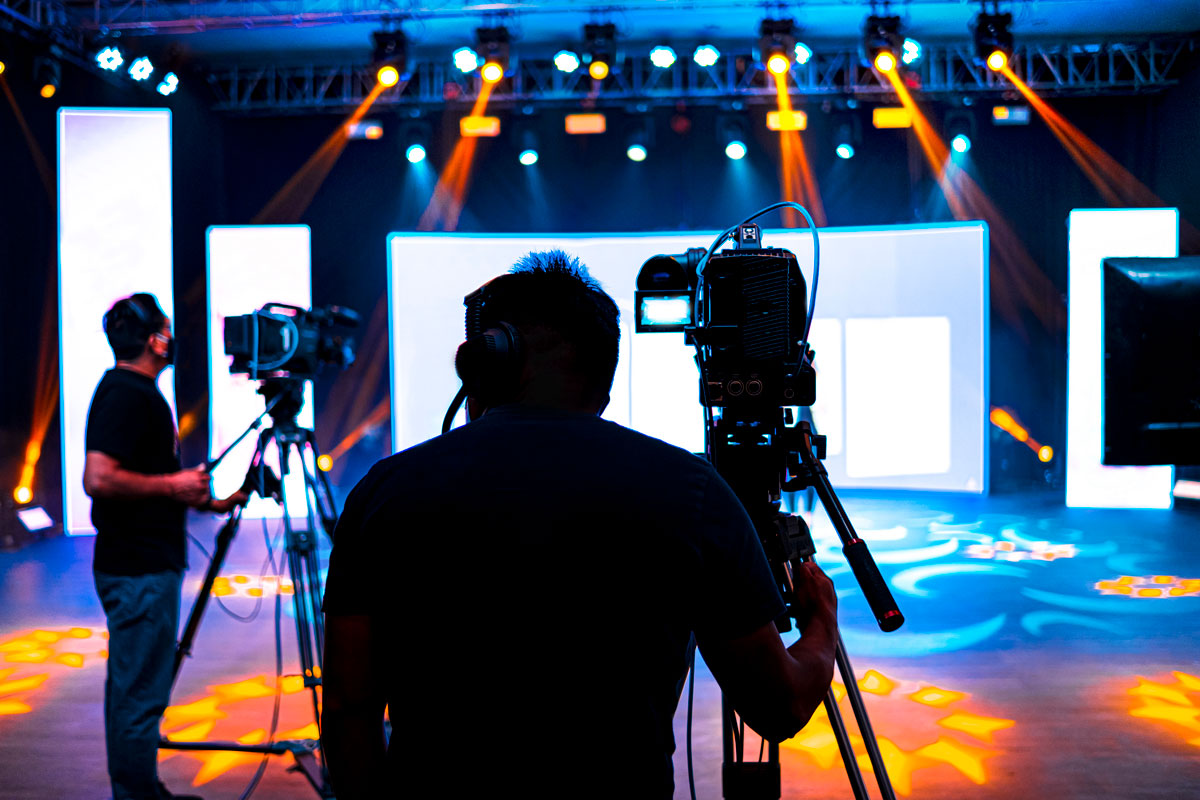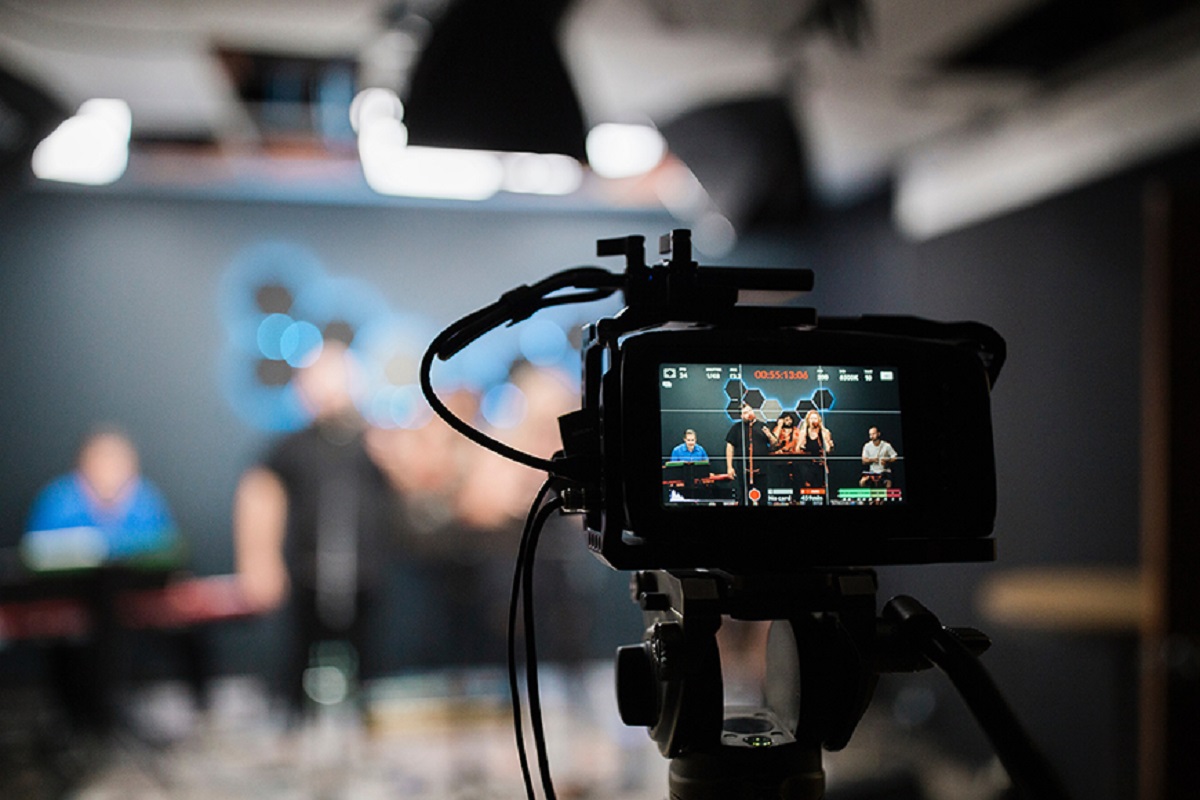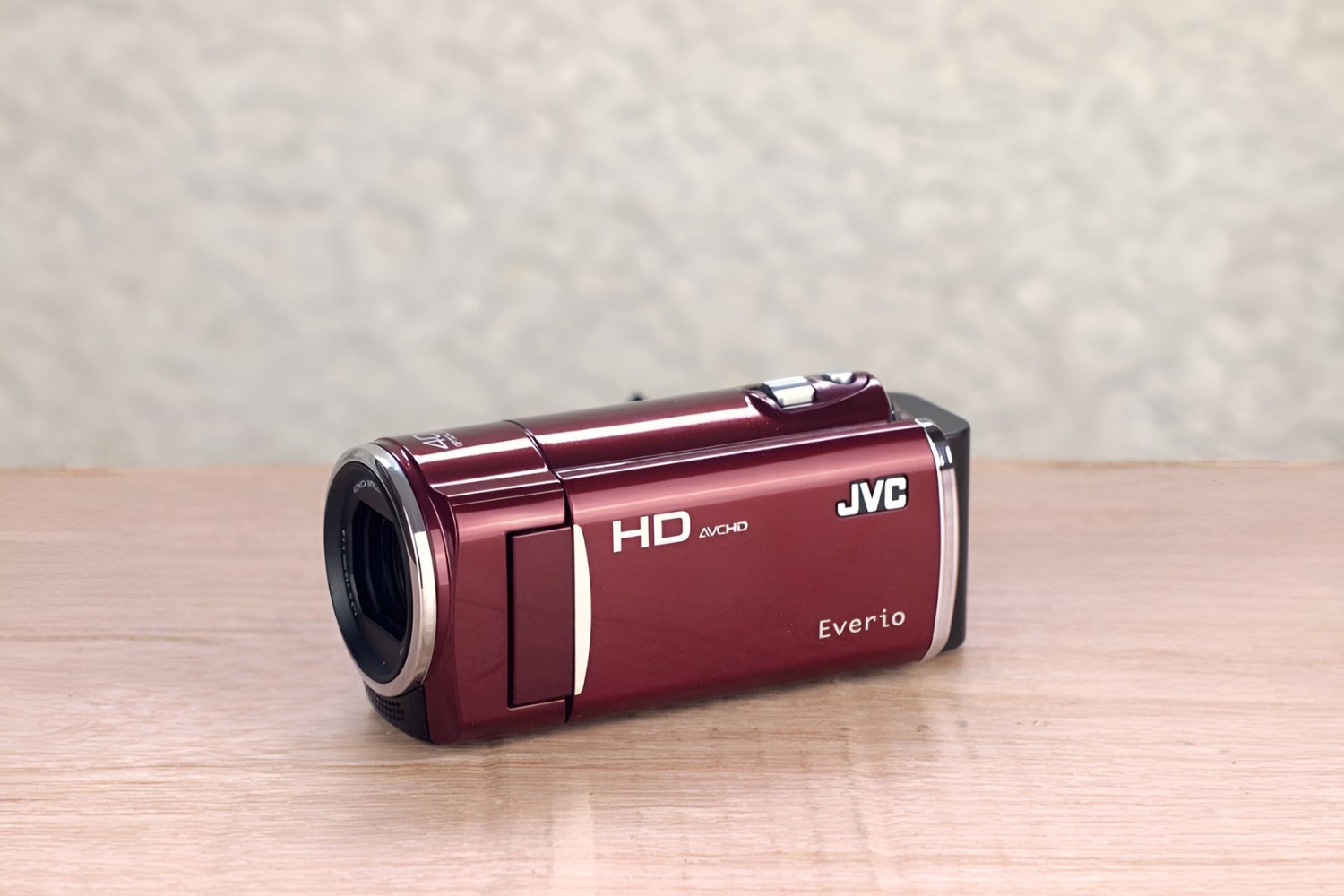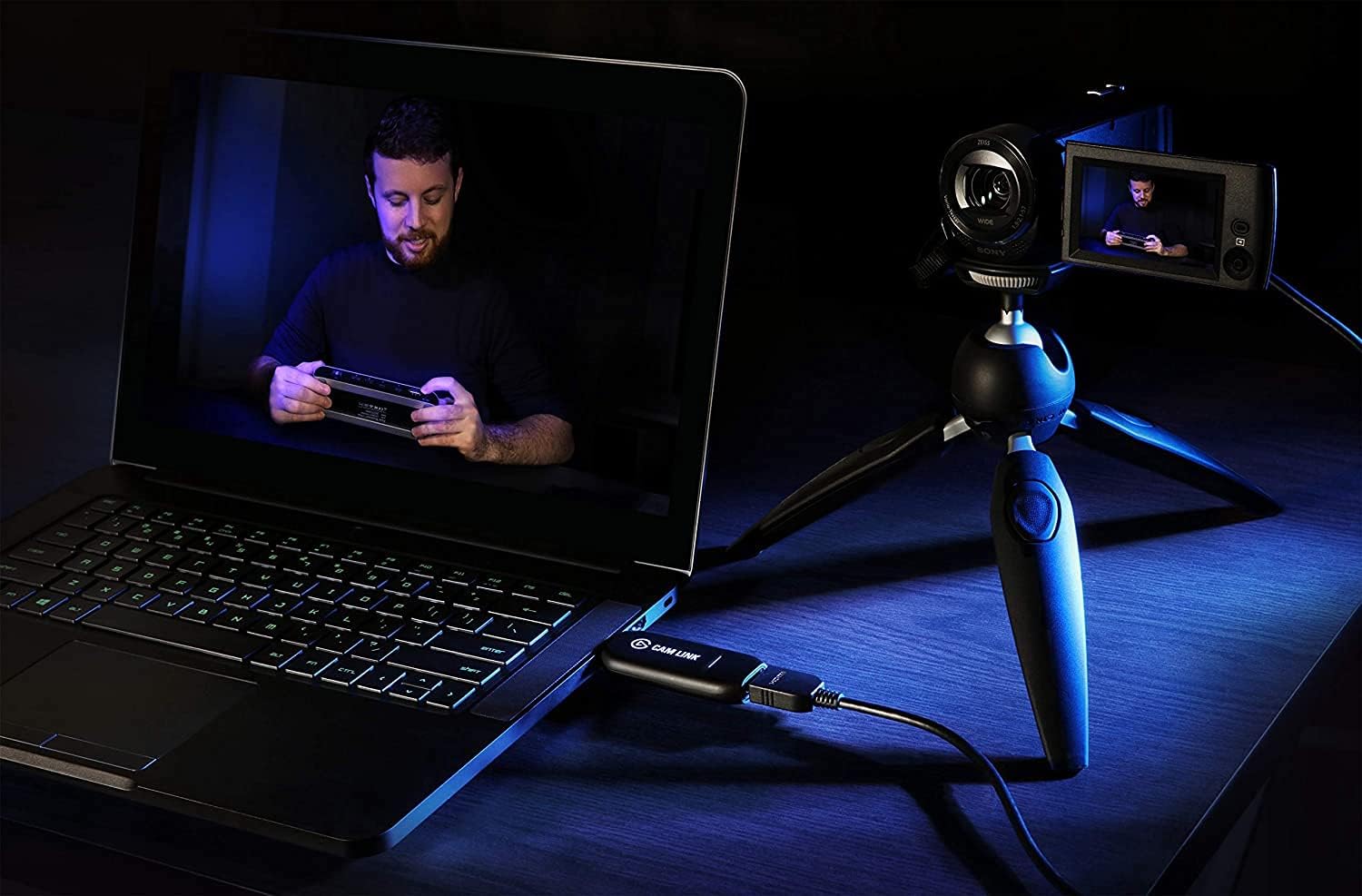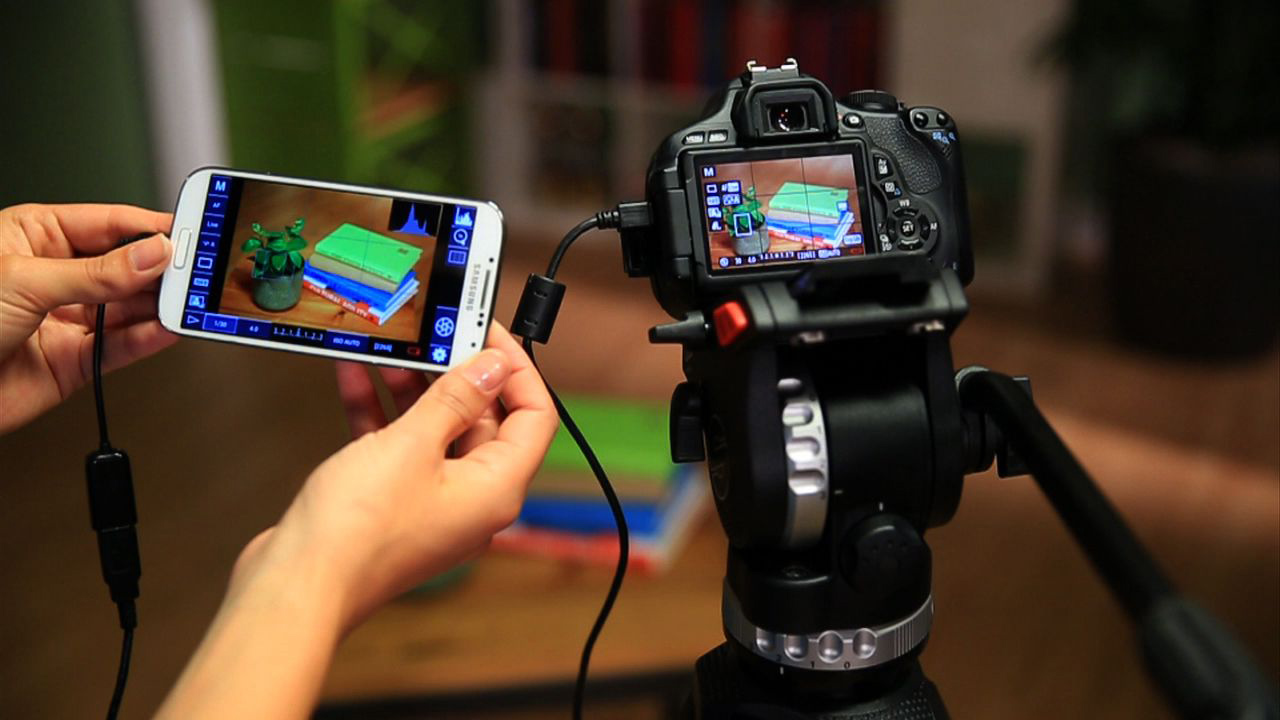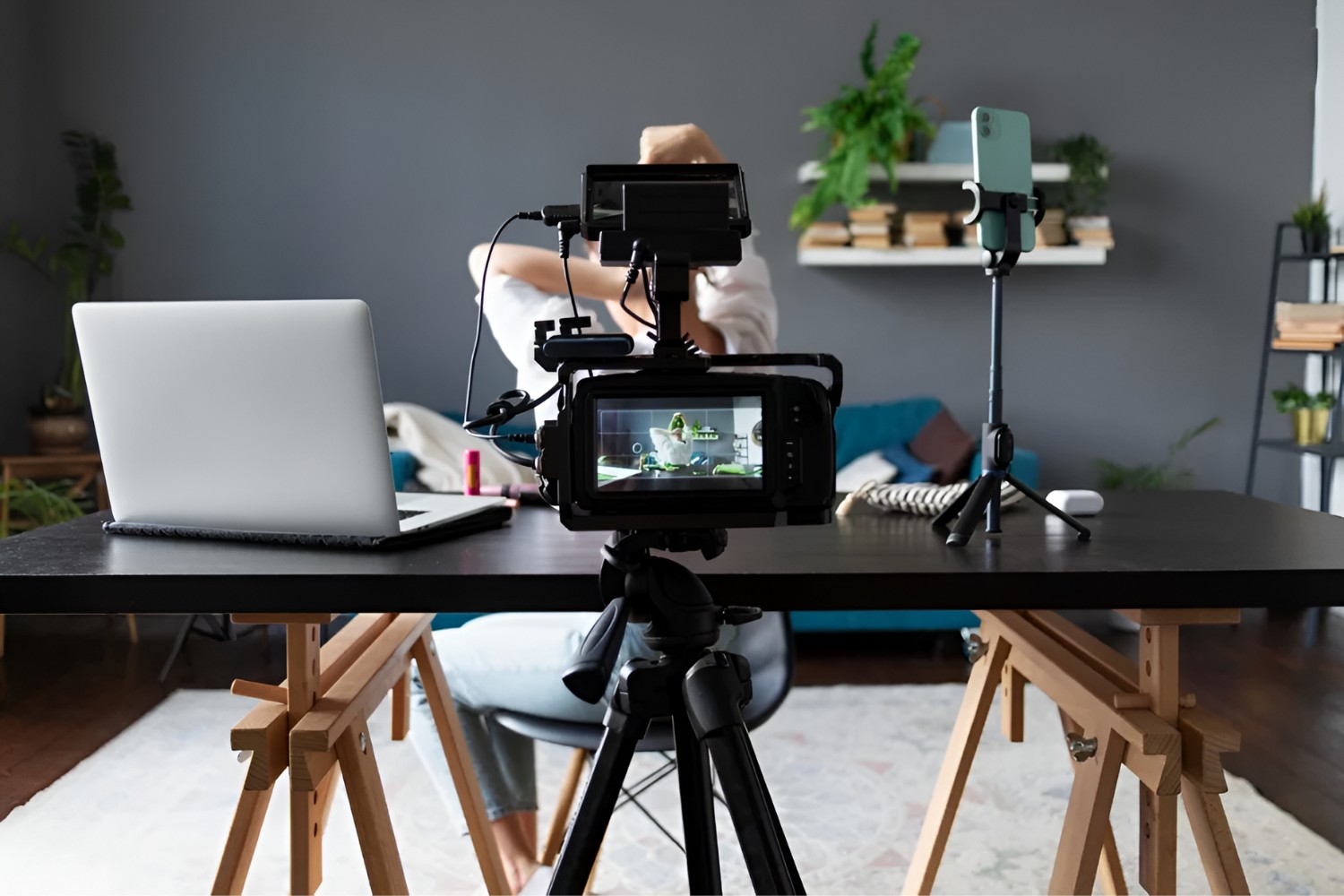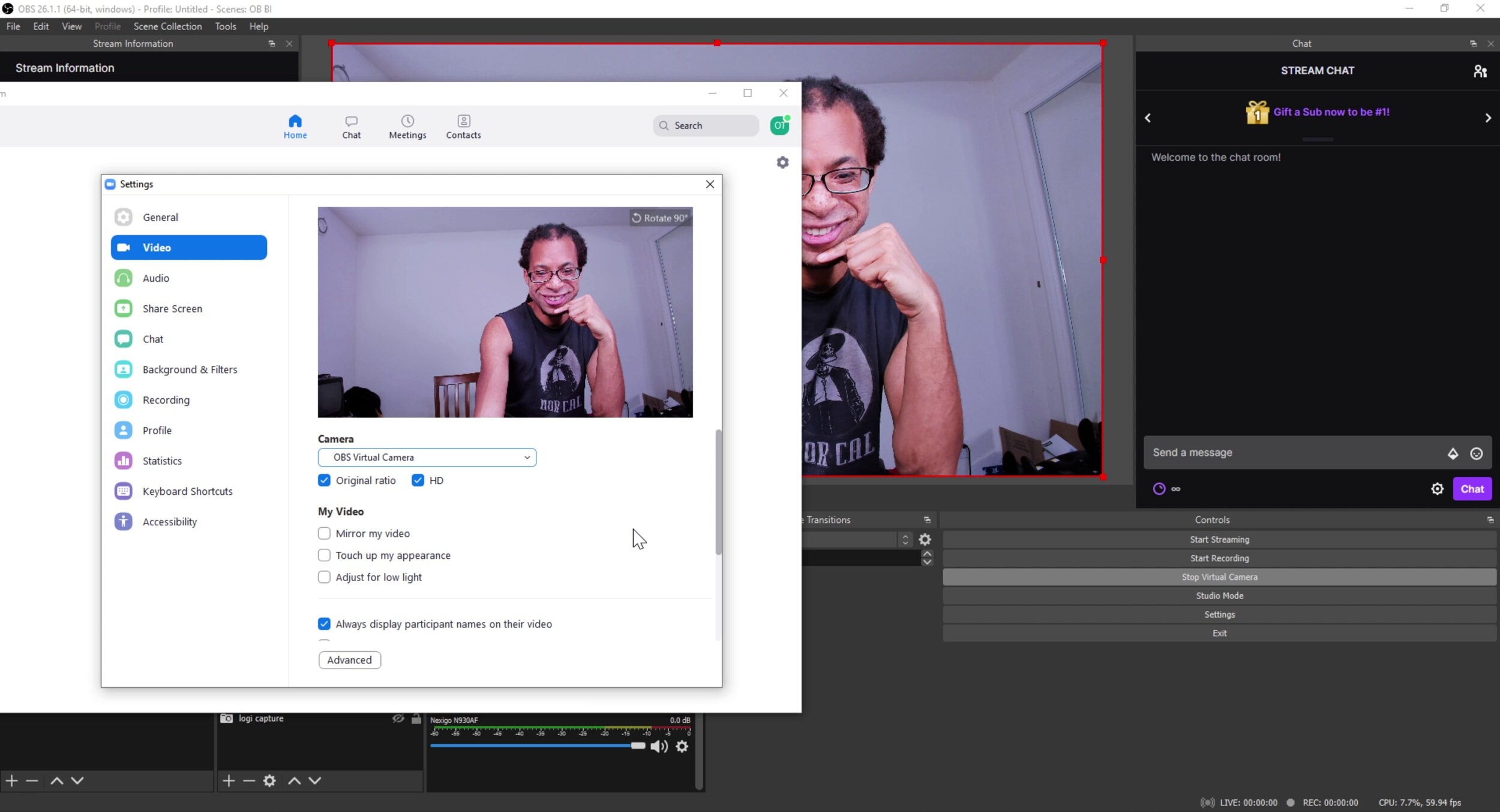Introduction
Are you ready to share your adventures, tutorials, or special moments with the world in real-time? Live streaming with a camcorder is an excellent way to engage with your audience and showcase high-quality video content. Whether you're a vlogger, educator, or enthusiast, the ability to broadcast live from your camcorder opens up a world of possibilities.
In this comprehensive guide, we'll explore the essential steps to successfully live stream with your camcorder. From selecting the right camcorder for your needs to setting it up for live streaming and choosing the appropriate software, we'll cover everything you need to know to start live streaming like a pro. Additionally, we'll provide valuable tips to ensure a seamless and captivating live streaming experience for your viewers.
As the demand for live streaming continues to grow across various industries, mastering the art of live streaming with a camcorder can set you apart as a content creator. Whether you're looking to build a loyal audience, share your expertise, or document your adventures, live streaming offers an immersive way to connect with your viewers in real time.
With the right equipment, technical know-how, and creative approach, you can leverage the power of live streaming to captivate, educate, and entertain your audience. So, let's dive into the world of live streaming with your camcorder and discover how you can elevate your content creation to new heights.
Choosing the Right Camcorder for Live Streaming
When it comes to live streaming, selecting the right camcorder is crucial for delivering high-quality and engaging content to your audience. Consider the following factors to ensure you choose a camcorder that meets your live streaming needs:
- Video Quality: Opt for a camcorder that supports at least 1080p resolution for crisp and clear video output. Higher resolutions, such as 4K, can provide an even more immersive viewing experience for your audience.
- Audio Capabilities: Look for a camcorder with built-in or external microphone support to capture clear and balanced audio during your live streams. Good audio quality is essential for maintaining viewer engagement.
- Low-Light Performance: If you anticipate live streaming in various lighting conditions, choose a camcorder with excellent low-light performance to ensure your content looks professional and visually appealing at all times.
- Streaming Compatibility: Ensure that the camcorder is compatible with live streaming platforms and supports the necessary output options, such as HDMI or USB connectivity, to seamlessly connect to your computer for broadcasting.
- Stabilization Features: Consider a camcorder with built-in stabilization or the ability to connect to stabilizing equipment to minimize camera shake and deliver steady footage, especially if you’ll be live streaming while in motion.
Additionally, assess your specific content creation needs and budget constraints to find a camcorder that strikes the right balance between features, performance, and affordability. Whether you’re focusing on outdoor adventures, indoor tutorials, or live events, choosing a camcorder that aligns with your content style and objectives is essential for achieving professional-looking live streams.
By carefully evaluating these factors and conducting thorough research on available camcorder options, you can make an informed decision that empowers you to deliver captivating live streams with confidence and technical precision.
Setting Up Your Camcorder for Live Streaming
Once you’ve chosen the ideal camcorder for your live streaming endeavors, it’s essential to set it up correctly to ensure seamless and professional-looking broadcasts. Follow these essential steps to prepare your camcorder for live streaming:
- Adjust Camera Settings: Access your camcorder’s settings menu to configure the video resolution, frame rate, and audio input levels according to your streaming preferences. Ensure that the settings are optimized for live streaming to deliver the best possible visual and audio quality.
- Mounting and Stability: Securely mount your camcorder on a tripod or stabilizing equipment to maintain a steady and consistent frame throughout your live stream. Stabilization is crucial for capturing smooth and professional-looking footage, enhancing the overall viewing experience for your audience.
- Power Supply: Connect your camcorder to a reliable power source to avoid interruptions during your live stream. Consider using an AC adapter or an extended battery pack to ensure continuous power supply, especially for longer streaming sessions.
- Audio Setup: Test the audio input and levels to ensure that your camcorder captures clear and balanced sound. If using an external microphone, connect it to the camcorder and perform audio tests to verify optimal audio quality before going live.
- White Balance and Exposure: Adjust the white balance and exposure settings on your camcorder to achieve accurate color representation and optimal exposure levels, particularly in varying lighting conditions. Properly calibrated white balance and exposure settings contribute to visually appealing live streams.
By meticulously setting up your camcorder according to these guidelines, you can establish a solid foundation for delivering professional-grade live streams that captivate and engage your audience. Taking the time to fine-tune your camcorder’s settings and ensuring its stability and power supply will contribute to a seamless live streaming experience, allowing you to focus on delivering compelling content without technical distractions.
Connecting Your Camcorder to Your Computer
Once your camcorder is set up and ready, the next crucial step in the live streaming process is connecting it to your computer for seamless broadcasting. Follow these steps to establish a reliable connection between your camcorder and computer:
- Identify Connection Ports: Locate the output ports on your camcorder, such as HDMI, USB, or AV outputs, and identify the corresponding input ports on your computer. Ensure that your computer has the necessary ports and adapters to receive the video and audio signals from your camcorder.
- Use High-Quality Cables: Select high-quality cables and adapters to connect your camcorder to your computer. For digital connections, such as HDMI or USB, use certified cables to maintain signal integrity and minimize potential transmission issues during live streaming.
- Configure Audio and Video Settings: Access your computer’s audio and video settings to recognize and configure the input signals from your camcorder. Adjust the audio input source and video capture settings to ensure that your computer accurately receives and processes the audiovisual data from the camcorder.
- Test the Connection: Before going live, conduct a thorough test of the camcorder-to-computer connection to verify that the video and audio signals are successfully transmitted and recognized by your computer. Use live streaming software to monitor the incoming signals and make necessary adjustments for optimal performance.
- Ensure Stable Data Transfer: To prevent interruptions during live streaming, ensure that the data transfer between your camcorder and computer is stable and reliable. Minimize potential sources of electromagnetic interference and maintain a secure physical connection between the devices to avoid signal dropouts or artifacts in your live stream.
Establishing a robust and dependable connection between your camcorder and computer is essential for delivering smooth and high-quality live streams. By following these steps and conducting thorough testing, you can ensure that your camcorder’s video and audio signals are seamlessly transmitted to your computer, setting the stage for captivating and professional live streaming experiences.
Choosing the Right Software for Live Streaming
Once your camcorder is connected to your computer, selecting the appropriate software for live streaming is crucial for managing your broadcasts and engaging with your audience effectively. Consider the following factors when choosing the right software for your live streaming needs:
- Compatibility and Features: Look for live streaming software that is compatible with your computer’s operating system and offers a comprehensive set of features, including video and audio input management, scene transitions, overlays, and audience interaction tools. Ensure that the software supports the input signals from your camcorder and provides the flexibility to customize your live stream’s visual and audio elements.
- Reliability and Stability: Prioritize software known for its reliability and stability during live streaming sessions. Robust software with minimal technical glitches and consistent performance is essential for delivering uninterrupted and professional live streams to your audience.
- Streaming Platform Integration: If you have a preferred live streaming platform, such as YouTube, Twitch, or Facebook Live, choose software that seamlessly integrates with your platform of choice. Compatibility with popular streaming platforms simplifies the setup process and ensures a smooth broadcasting experience.
- User-Friendly Interface: Opt for software with an intuitive and user-friendly interface, especially if you’re new to live streaming. A well-designed interface with clear controls and settings makes it easier to manage your live streams, switch between scenes, and engage with your audience without unnecessary complexity.
- Community Support and Updates: Consider software that has an active user community and receives regular updates and improvements from the developers. Community support and ongoing updates contribute to a dynamic and evolving live streaming experience, offering access to new features and addressing potential issues over time.
By carefully evaluating these factors and exploring the available live streaming software options, you can make an informed decision that aligns with your technical proficiency, content creation goals, and audience engagement strategies. The right software not only streamlines your live streaming process but also enhances your ability to deliver captivating and interactive broadcasts that resonate with your viewers.
Tips for a Successful Live Stream with Your Camcorder
As you embark on your live streaming journey with your camcorder, consider implementing the following tips to elevate the quality of your broadcasts and create engaging experiences for your audience:
- Engage with Your Audience: Interact with your viewers during the live stream by acknowledging comments, answering questions, and encouraging participation. Building a sense of community and dialogue enhances viewer engagement and fosters a more immersive live streaming experience.
- Plan and Rehearse: Outline a structure for your live stream, including key talking points, visual elements, and transitions. Rehearse your content to ensure a smooth delivery and minimize pauses or technical hiccups during the broadcast.
- Optimize Lighting and Audio: Prioritize well-lit and acoustically treated environments for your live streams. Good lighting and clear audio contribute to the overall production quality and viewer satisfaction, enhancing the impact of your content.
- Promote Your Live Stream: Build anticipation for your live stream by promoting it across your social media channels and engaging with your audience beforehand. Creating buzz around your upcoming broadcast can attract more viewers and generate excitement for your content.
- Monitor Technical Aspects: Keep an eye on technical aspects such as audio levels, video quality, and internet connectivity throughout the live stream. Address any issues promptly to maintain a professional and seamless broadcast.
- Offer Value and Entertainment: Whether you’re sharing educational content, entertainment, or personal experiences, strive to offer value to your audience. Engaging and informative content keeps viewers invested in your live streams and encourages repeat viewership.
- Experiment and Innovate: Embrace creativity and innovation in your live streams by experimenting with different formats, visual enhancements, and interactive elements. Continuously evolving your content keeps your audience engaged and excited about future broadcasts.
By incorporating these tips into your live streaming approach, you can enhance the overall quality of your broadcasts and cultivate a loyal and engaged audience. Consistent application of these strategies contributes to the success of your live streaming endeavors and establishes your camcorder as a powerful tool for sharing compelling content in real time.







